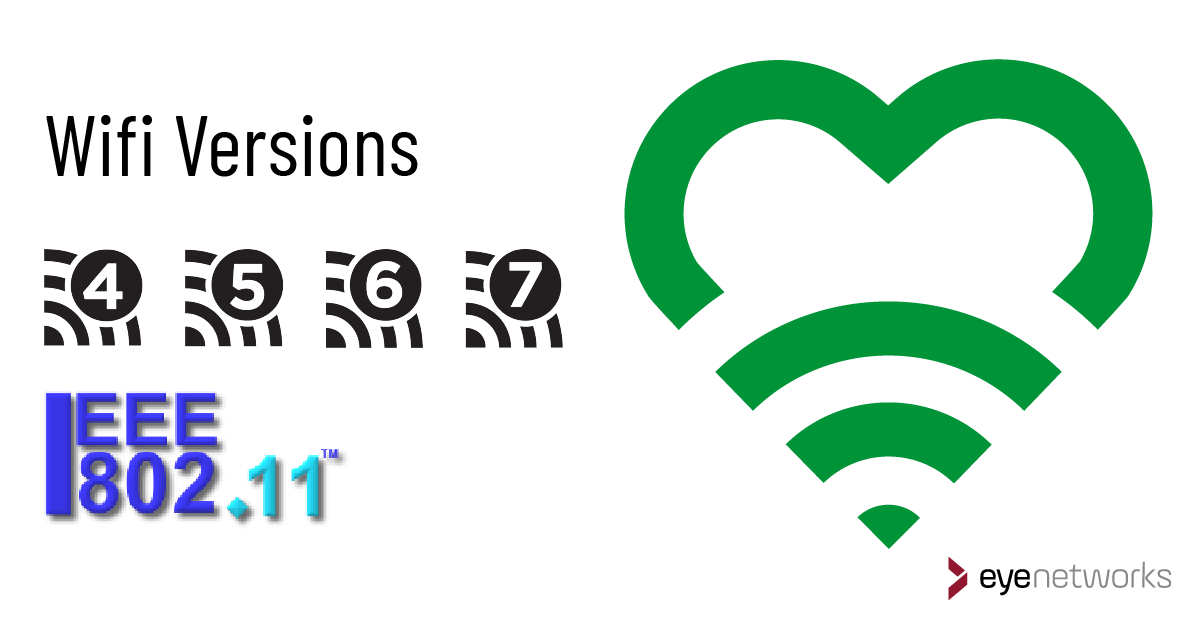How many versions of the wifi standard actually exist? Why do some say “Wi-Fi 7” and others 802.11be? Get an overview of the wifi generations so far.
The standards for wireless communication that we colloquially call “wifi” are developed and maintained by IEEE 802, which is a group under the Institute of Electrical and Electronics Engineers. The standards from this group are therefore referred to as 802.11, with letters as versioning.
This is a structured versioning system, but does not provide the most readable and intuitive names for us users.
“Wi-Fi” itself is actually a brand name from the industry organization WiFi Alliance that designates all products that are certified to comply with the 802.11 standards. In 2018, the WiFi Alliance introduced a number system to be used on certified WiFi products as a more intuitive indication of capabilities.
The higher the number, the newer the technology and higher possible speeds. “Wi-Fi 7” should be understood as the 7th generation of wifi, while “Wi-Fi 4” was the 4th generation. The first three generations are considered so outdated that they are not named.
Generational names and standard names are now used interchangeably, and it is therefore not wrong to say “ax” or “be” about product capabilities, although referring primarily to generations is increasingly common.
| Standard | Also known as | Description |
|---|---|---|
| 802.11be | Wi-Fi 7 | The standard is also referred to as EHT — Extremely High Throughput. Performance and capacity are the focus. The very first products hit the market in 2023. Certification from the Wi-Fi Alliance started in January 2024, and finalization of the standard is expected within the year. Frequency bands: 2.4, 5, and 6 GHz Theoretical max speed: 46.1 Gbps Read more: Wi-Fi 7: What is it and who needs it? |
| 802.11ax | Wi-Fi 6 Wi-Fi 6E | Also called “high efficiency wireless”, the goal was to quadruple the throughput compared to Wi-Fi 5 / 802.11ac . This is the latest standard in general use today. The Wi-Fi Alliance started certification of Wi-Fi 6 products in September 2019, the standard itself was finally approved in May 2021. Frequency bands: 2.4, 5, and (for the first time) 6 GHz. Note that most Wi-Fi 6 products do not support 6 GHz. Wi-Fi 6E is a certification specifically for 6 GHz compatible products. Theoretical top speed: 9.6 Gbps Further reading: Wi-Fi 6E: Internet On 6 GHz Wi-Fi 6: What Can We Expect From 802.11ax? Wi-Fi 6: The compatibility issues you should know about |
| 802.11ac | Wi-Fi 5 | In use from 2014. Focus on increased speed. The standard is backwards compatible with 802.11n Frequency band: Only 5 GHz Theoretical top speed: 6.9 Gbps. Further reading: 802.11ac Wave 2: What’s new? |
| 802.11n or an | Wi-Fi 4 | In use from 2009. This version also introduced MIMO, Multiple Input Multiple Output data, where multiple antennas are used to streamline communication between transmitter and receiver without requiring higher bandwidth or more transmit capacity. Frequency band: First version of the standard that included both 2.4 and 5 GHz. Theoretical top speed: 600 Mbps |
| 802.11g | – | In use from 2003 Frequency band: Covers only the 2.4 GHz band. Theoretical peak speed: 54 Mbps |
| 802.11a and 802.11b | – | In use from 1999 Theoretical top speeds: 802.11a: 54 mbps (5 GHz) 802.11b: 11 mbps (2.4 GHz) |
You can read more about how wifi developed in The History of Wifi
Also:
- Be sure to check which wifi standards are supported before you buy new electronics
- Is the internet connection slow even if you have a new mobile or router that supports the latest standards?
Links
Wi-Fi Alliance on:
- Wi-Fi 7: https://www.wi-fi.org/discover-wi-fi/wi-fi-certified-7
- Wi-Fi 6: https://www.wi-fi.org/discover-wi-fi/wi-fi-certified-6
Article by Jorunn Danielsen
